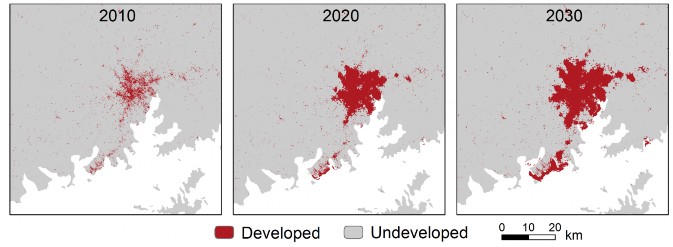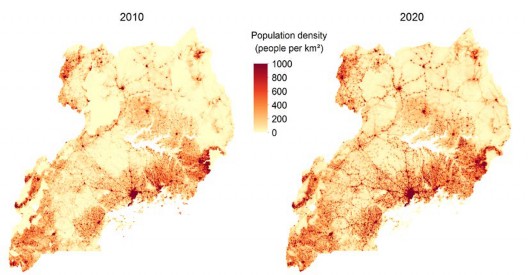WorldPop Projects
Mapping urban growth scenarios in Africa
Project leads: Andy Tatem, Catherine Linard
Collaborators/funders: Bill and Melinda Gates Foundation, Orange
According to United Nations forecasts, the population of Africa will double over the next 40 years: from about 1 billion in 2010, Africa is expected to reach 2 billion inhabitants in 2045. Much of this anticipated population growth is expected to be concentrated in urban areas, with almost 720 million more people living in cities over the same period. Knowing where people are and where they will habit in the future is essential to prepare for future socio-economic, environmental and health changes associated with urban growth and expansion. By analysing the past evolution of a large set of African cities based on remote sensing data, we develop urban growth models and forecasts for African cities. The models combine a parsimonious set of generalizable factors that influence spatial patterns of urban growth: slope angle derived from a digital elevation model; accessibility represented by travel time to the central business district along the transport network; and neighborhood indexes such as the proportion of urbanized land within a given buffer distance. A statistical algorithm is then used to generate predictions of the rural to urban conversion probability for every 100 m grid cell of a city. The simple and generalizable model developed in this work is being used to produce the most detailed Africa-wide urban expansion predictions that have yet been made, and it will provide realistic scenarios of urban growth to 2020 and 2030. Our spatial and quantitative estimations of urban change and population density are particularly valuable in vulnerability and health assessment studies.




